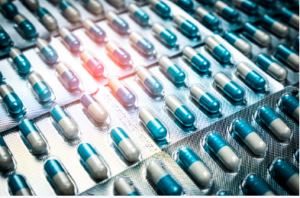Recycling PET (polyethylene terephthalate) plastic reduces greenhouse gas emissions and saves energy as it can be used as manufacturing feedstock to create new products.
 Bottles collected through residential curbside recycling programs and sent to material recovery facilities for sorting and compression are then transported.
Bottles collected through residential curbside recycling programs and sent to material recovery facilities for sorting and compression are then transported.
Recyclable
Pharmpac NZ rPET recyclable packaging has quickly become the go-to choice for many businesses due to its clear transparency and ability to be reused time after time, helping reduce landfill waste while improving environmental sustainability by decreasing pollution caused by plastic waste.
PET packaging can be recycled into new products without losing its properties or becoming contaminated, creating an endlessly recyclable closed-loop system and supporting circular economies.
PET plastic is an eco-friendly option, as its recycling requires less energy and fossil fuel than producing new plastic from virgin resources. In addition, reprocessed PET can be reprocessed into new products for minimal environmental impact during production.
Recycling PET packaging offers another advantage – customisation to meet a company’s needs. It enables businesses to design more imaginative packaging designs that attract more customers.
When determining if a product is recyclable, look for the number “1” symbol on its container’s base – this indicates it can be processed back into new packaging or products after being reused.
Pharmpac NZ rPET recyclable packaging is an invaluable resource, with potential uses such as making pillows, duvets and reusable shopping bags. Furthermore, recycled PET can be re-used in manufacturing automotive components like carpets and boot linings, industrial end-use items like geotextiles and roof insulation materials, and new bottles for food and non-food products.
Reusable
Reclaimed PET waste is cleaned and dried before being further processed into more highly refined pellets for new bottles or extruded into PET sheets for use in clamshell food containers, trays, cups, or other applications.
Reusable packaging options are perfect for food and beverage companies looking to reduce landfill waste by eliminating single-use packaging while simultaneously cutting costs associated with shipping costs and space requirements for storing their packaging.
Lightweight
Polyethylene Terephthalate, commonly known as PET, is a lightweight yet strong plastic used in numerous packaging applications. In addition, PET plastic can be recycled multiple times without losing quality or clarity – providing endless recycling potential!
Water bottles, soda bottles, shampoo bottles, and cups commonly use PET plastic. Furthermore, it can also be found used as fabric products such as clothing or carpeting.
PET plastic is one of the few varieties to be 100% recyclable, helping keep waste out of landfills and save the environment by recycling.
PET plastic is known for being recyclable and energy efficient – meaning less energy is consumed to produce than with other plastics.
PVC also boasts excellent gas barrier properties and is suitable for various uses. Because of its lightweight nature and low costs, this material has become an increasingly popular choice for food and beverage packaging applications.
Packaging industries have increasingly turned to lightweight materials to reduce waste production, such as PET, instead of glass for packing food and beverages such as milk, beer and sauces.
PET’s lightweight construction allows it to be formed into different shapes and sizes at an affordable cost, creating more unique packaging designs that make brands stand out on store shelves.
PET plastic packaging is ideal for businesses that aim to save money and the planet. Furthermore, consumers can easily recycle it, thereby decreasing waste production; moreover, it’s easy to locate recycling centres for PET and other recyclable plastics.
Durable
Polyethylene Terephthalate (PET) plastic is one of the world’s most challenging materials. Not only is PET BPA, phthalate and styrene free; the FDA has approved it as food-grade containers. Furthermore, PET can withstand heat, light and water conditions with ease.
PET plastic belongs to the polyester family and comprises hydrocarbon ethylene glycol and terephthalic acid. It is a highly versatile and widely-used thermoplastic that can be moulded or extruded into any number of shapes and forms.
PET plastic is the ideal material for packing food and beverages due to its strength and durability, with low shrinkage rate making it easy to handle, pack, recycle and reuse.
PET is an ideal material due to its moisture resistance and ability to act as an excellent barrier, making it suitable for many food packaging applications, including boxes, trays, and wraps.
